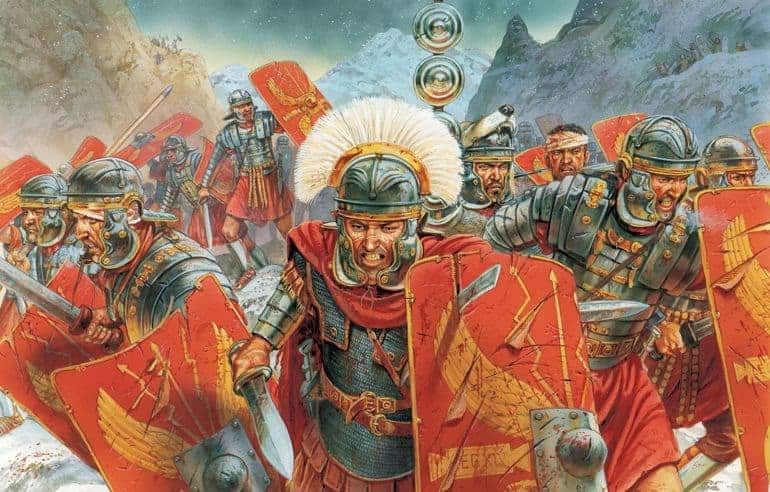Many armchair generals have a list of their favorite commanders packed away in the back of their mind somewhere. For Roman generals, we have dozens to hundreds of talented leaders, tacticians, strategists, and innovators to choose from.
This list attempts to rank the absolute best Roman commanders. These are men who stood out in centuries of Roman expansion and collapse as well as the proud Byzantine push back into the Mediterranean. Naval expertise counts, as well as inventions or reforms, but amazing tactical victories factor the most in this ranking.
Marcus Agrippa: The First Emperor’s Quiet Right-hand Man
We all know about Julius Caesar and we all should know about the first official Emperor of Rome, Octavian Augustus. But what about the lowborn Agrippa, who befriended Octavian at a young age, learned about warfare by fighting for Caesar at battles such as Munda, and was really responsible for the victories that brought Rome from a Republic to an Empire.

Once he became Octavian’s top commander, Agrippa went on campaign in Gaul, winning great victories, crossing the Rhine (only the second to do so after Caesar) and earning a Triumph. All before he was thirty. Agrippa refused the glory of a Triumph, however, saying it would be disrespectful to do while Pompeian resistance still flourished in Sicily.
Soon, Agrippa was sent to finally crush the resistance that was led by Sextus Pompey, the last remaining threat of the long civil war. Sextus had a huge navy that he used to raid Italy and protect his base in Sicily.
Agrippa recruited a huge navy of his own and trained them in a secretly constructed inlet to keep safe from Sextus’ experienced raiding parties. During this extensive training, Agrippa developed the harpax, a ballista-fired grappling hook to catch and reel in enemy ships for hand-to-hand boarding actions rather than the standard ramming tactics. Agrippa also loaded his ships with extra marines, specifically trained for the ship-to-ship fighting the harpax would bring.
When his navy was ready, Agrippa sailed straight to Sextus’ base and fought a 600-ship battle. his innovative tactics worked perfectly against the Pompeian navy. Agrippa lost only three ships and captured or destroyed all but 17 of Sextus’ 300 ships, crushing Pompeian resistance.
At the better-known Battle of Actium, Agrippa went against Octavian’s wishes to attack Antony’s navy and decided to trap Antony and Cleopatra’s navy in a bay. Agrippa launched raids against Antony’s supply lines to starve his forces. Eventually, Antony and Cleopatra had to try to break out of the bay before their troops starved.
Agrippa’s crescent-shaped defensive formation gave Antony and Cleopatra no hope of victory. Agrippa’s victory was harder-fought than against Sextus, but still was a decisive victory. It directly led to the end of the civil wars and the Emperorship of Octavian Augustus.
Agrippa doesn’t get a lot of credit simply because he passed his glory to his lifelong friend. Octavian used the victories of Agrippa to bolster his own support enough to have the people of Rome accept him as Emperor. A single ruler system was despised by most Romans and Octavian couldn’t have convinced the people to accept him without the glory he gained through Agrippa.

